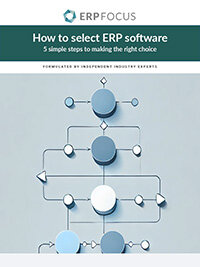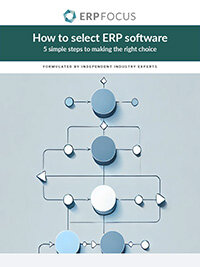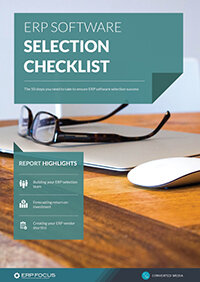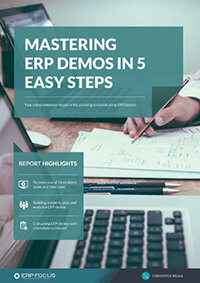9 ERP Analytics Features You Need to Monitor Your Business
ERP systems began as primarily transaction engines with some heuristic decision making support. All those transactions accumulate a large amount of data. Analytics is the art and science of extracting information from that mass of ERP data. But what features does you business need to get the most out of ERP analytics?
Customer Information
What customer is the most profitable? We always knew which one had the greatest sales volume. This next level of analysis is available with tools in most of today’s ERP analytics systems. We could also try to identify which customers are easiest to do business with by integrating CRM with our analytics modules.
Inventory
Inventory is purchased as manufactured items we own for sale or to be transformed into something for sale. By slicing and dicing individual parts and categories of parts we can determine which ones are contributing the most profit. Or which ones are not moving at all. We can use that knowledge from ERP analytics to optimize our investment in inventory.
Products & Services
Similar to inventory, we can analyze what we actually sell whether a physical thing or a service. Do they all contribute equally to our profit – probably not? We can look deeper too, is our investment in each one the same and what is our return on that investment?
Data Mining
Data mining is analysis of large amounts of data searching for patterns, trends, anomalies, and dependencies. Knowledge of these can lead toward improved decision making and a better competitive position in our markets.
Decision Making
This is done every day at all levels of our business. ERP analytics provides information to enhance decision making. Analysis of the decisions can help us evaluate which ones were better than others and learn to improve future decisions.
Ad Hoc
Some analytics requirements are one-time events. Ad hoc is Latin for “for this” and is the term used to describe these analyses. We might want to look at events yesterday because we suspect something and depending on the results, we might stop and be satisfied or move to ongoing analysis.
Workflow Alerts
ERP systems today can send alerts when certain events happen. These can be sent by email, SMS, phone calls or however is best for the situation. The alert might be a warning that a process is behind schedule. It could also be a positive message that we achieved a business goal.
Company-Wide Metrics Monitoring
Metrics are a generic term for the measurements we take to track the health of our business through ERP. We can track individuals – how many hours did she work yesterday? We can track organization-wide factors – how many yards of concrete did we produce yesterday.
KPI Identification
Key performance indicators are the few metrics we capture regularly that enable us to easily check on the health of the business regularly. ERP analytics can identify those metrics which are closely linked to performance in different areas of your company.
Free white paper

How to Select ERP
Learn to select your ERP in 5 easy steps by following our expert's advice

Featured white papers
-

ERP Software Pricing Guide
Get the latest pricing information on over 80 popular ERP systems, and learn how to budget for your ERP project in our free guide
Download -

60-Step ERP Selection Checklist
Get the comprehensive checklist for your ERP selection project
Download -

ERP Demo Guide & Scorecard
Master your ERP demo with 5 easy steps using our free guide (includes demo scorecard)
Download
Related articles
-

The best ERP systems for process manufacturing
Consider these ERP systems when selecting your next process manufacturing ERP
-

CMMC Compliance: What Aerospace and Defense Manufacturers Need to Know
Key insights on CMMC compliance, deadlines, and securing DoD contracts with CMMC 2.0 certificatio...
-

5 ERP pricing definitions you need to understand
Have you mastered the ERP pricing lexicon yet? Getting to grips with these five definitions is a ...

